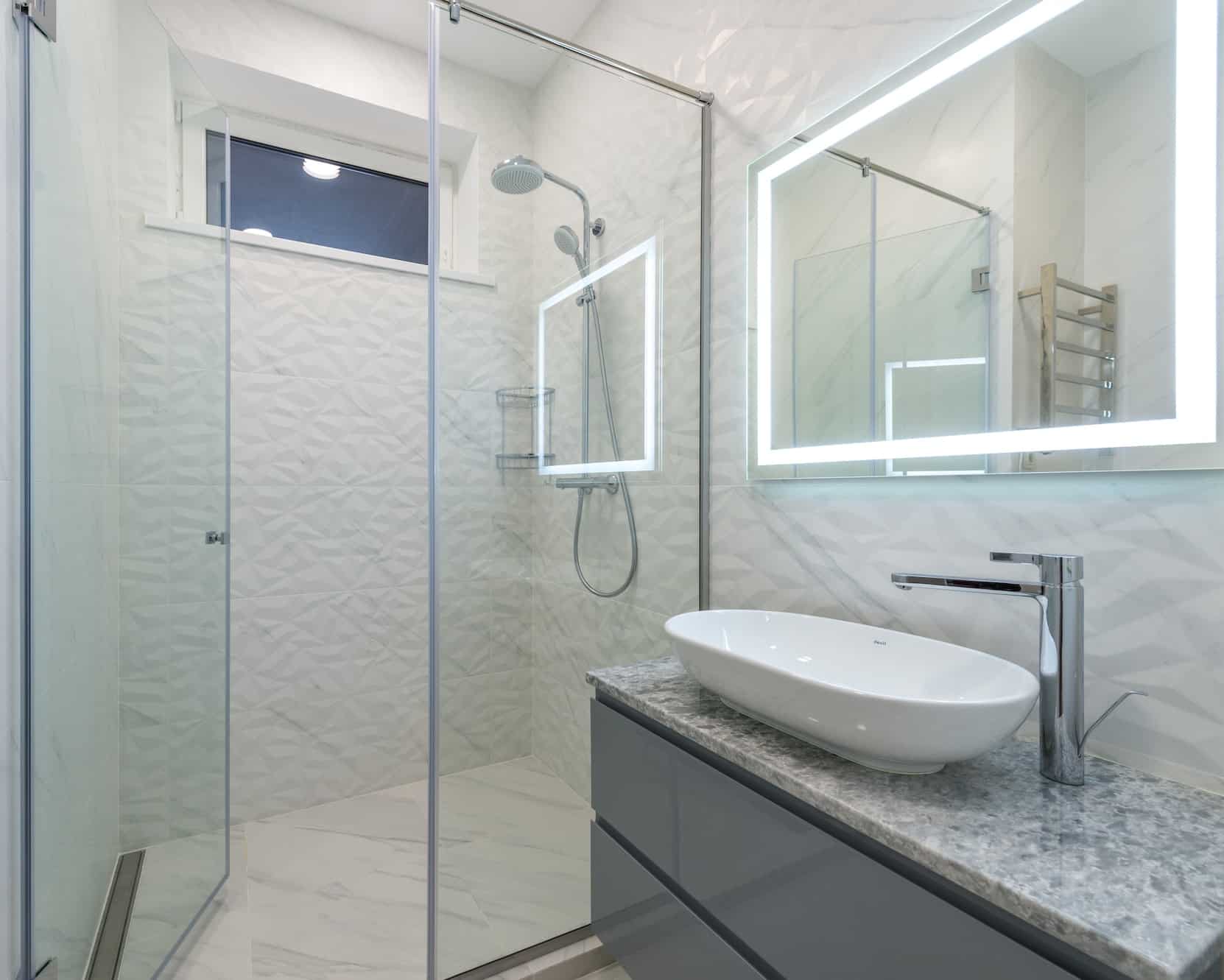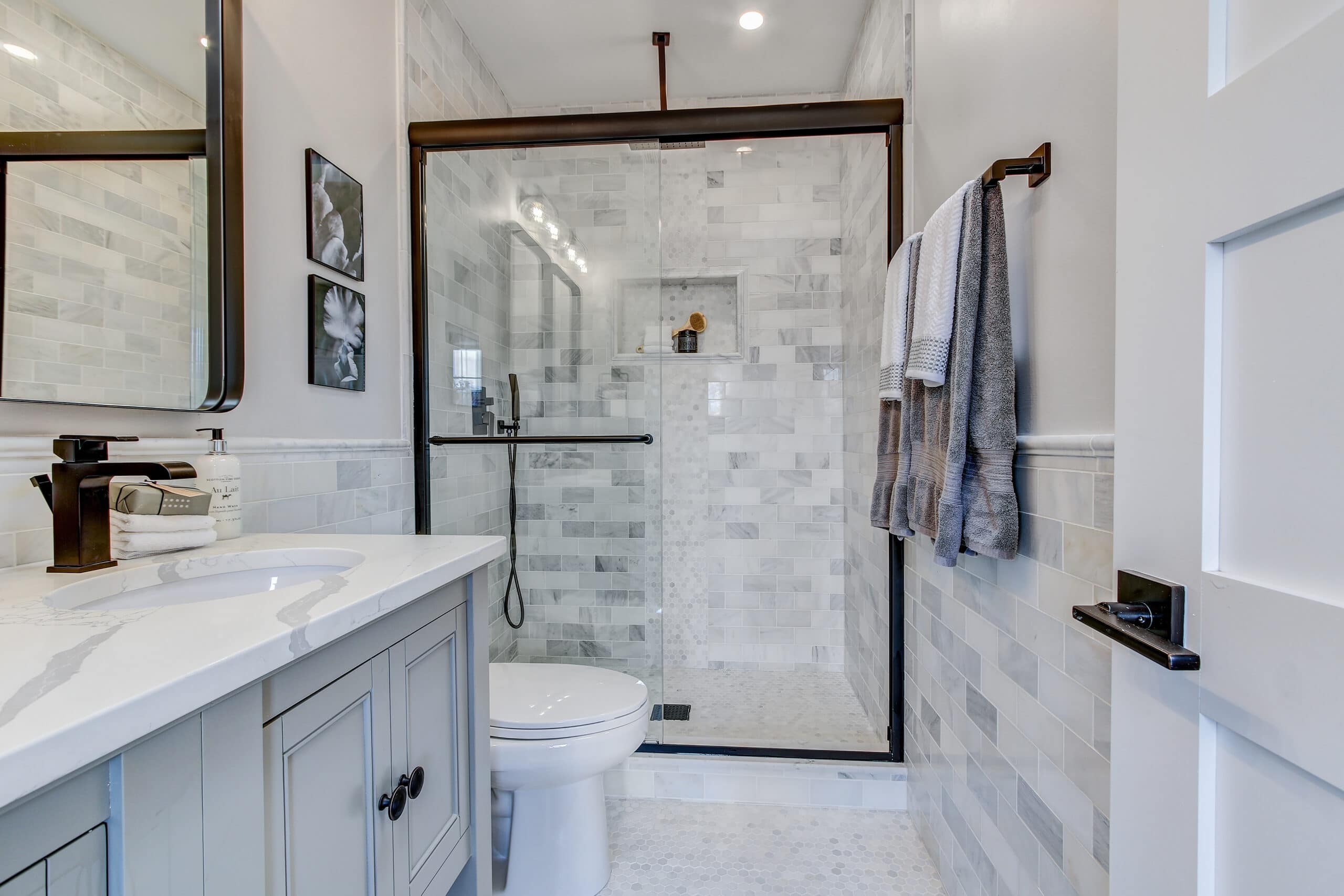Factors Influencing Small Bathroom Remodel Time

The duration of a small bathroom remodel can vary significantly depending on several factors. A comprehensive understanding of these factors can help you set realistic expectations and plan accordingly.
Scope of Work
The extent of the work involved in your bathroom remodel will be the primary determinant of its duration. Simple updates, such as painting, replacing fixtures, or installing new cabinets, can be completed relatively quickly, often within a few days to a week. Major renovations, on the other hand, such as plumbing, electrical rewiring, or replacing flooring, require more time and effort.
A simple bathroom remodel involving only cosmetic updates can be completed in as little as a week, while a major renovation that includes plumbing and electrical work may take several weeks or even months.
Design and Materials
The complexity of your bathroom design and the materials you choose can also impact the remodel’s timeline. A simple, straightforward design with readily available materials will generally take less time than a complex design with custom elements or specialty materials.
A bathroom remodel with a simple design and standard materials can be completed within a few weeks, while a remodel with a complex design and custom materials may take several months.
Permits, Inspections, and Material Availability
Obtaining necessary permits and scheduling inspections can add time to your remodel. Delays can also occur if materials are not readily available, particularly if you are using specialty or custom items.
In some areas, obtaining permits and scheduling inspections can take several weeks. Delays in material availability can also add significant time to your remodel, especially if you are using specialty or custom materials.
Tips for Managing Time and Budget: How Long Should A Small Bathroom Remodel Take

A bathroom remodel can be a significant undertaking, requiring careful planning and execution to ensure a smooth and successful project. While it’s impossible to eliminate all delays and unexpected expenses, adopting proactive strategies can help you stay on schedule and within budget.
Minimizing Delays During a Bathroom Remodel
To prevent delays, it’s crucial to anticipate potential roadblocks and take steps to mitigate them.
- Obtain Necessary Permits: Before starting any work, ensure you have all the required permits from your local municipality. Delays can occur if you start construction without the necessary permits, which can lead to fines and work stoppages.
- Choose Reliable Contractors: Selecting experienced and reputable contractors is essential. Research potential contractors thoroughly, checking their licensing, insurance, and customer reviews. Avoid hiring contractors with a history of delays or complaints.
- Establish Clear Communication: Maintain open and consistent communication with your contractors throughout the project. Regularly discuss progress, potential issues, and any changes in plans. Clear communication helps prevent misunderstandings and delays.
- Manage Material Delays: Supply chain disruptions and material shortages can impact your project timeline. Order materials well in advance, allowing for potential delays. Consider using alternative materials if your preferred choices are unavailable.
- Plan for Unexpected Discoveries: During demolition, you may uncover unexpected issues, such as hidden pipes or structural problems. Have a contingency plan in place to address these unforeseen circumstances.
Effective Communication with Contractors, How long should a small bathroom remodel take
Open and consistent communication with contractors is vital for a successful bathroom remodel.
- Define Clear Expectations: From the start, clearly communicate your vision, desired timeline, and budget to your contractors. Discuss your expectations regarding project updates, communication frequency, and decision-making processes.
- Regular Meetings and Updates: Schedule regular meetings or calls with your contractors to discuss progress, address any concerns, and review upcoming tasks. Request detailed progress reports to stay informed about the project’s status.
- Utilize Communication Tools: Employ communication tools such as email, text messaging, or project management software to keep track of decisions, approvals, and any changes. This helps maintain a clear record of communication.
- Be Responsive: Respond promptly to contractor inquiries and requests. Delays in your responses can impact the project’s timeline.
Managing Expectations and Staying Within Budget
Realistic expectations and careful budget management are crucial for a successful bathroom remodel.
- Set Realistic Expectations: Avoid overestimating the speed of the project. Understand that unforeseen issues can arise, and adjustments to the timeline may be necessary. Be flexible and prepared for potential delays.
- Create a Detailed Budget: Develop a comprehensive budget that includes all costs, such as labor, materials, permits, and unexpected expenses. Allocate a contingency fund to cover unforeseen circumstances.
- Obtain Multiple Quotes: Get quotes from several contractors to compare prices and services. Choose a contractor who provides a detailed breakdown of costs and offers transparent pricing.
- Monitor Expenses: Track all project expenses meticulously. Regularly review your budget and make adjustments as needed. Consider using budgeting software or spreadsheets to simplify the process.
Creating a Detailed Project Plan and Schedule
A well-defined project plan and schedule provide a roadmap for a successful bathroom remodel.
- Define Project Scope: Clearly Artikel the project’s scope, including all tasks, materials, and desired finishes.
- Create a Detailed Schedule: Break down the project into smaller, manageable tasks and assign timelines for each. Consider using a Gantt chart to visualize the project schedule and dependencies.
- Include Milestones: Establish key milestones throughout the project, such as demolition completion, rough-in, and final inspections. This helps track progress and identify potential issues early on.
- Review and Adjust: Regularly review your project plan and schedule, making adjustments as needed based on progress and unforeseen circumstances.
